
Year 1311 (MCCCXI) was a common year starting on Friday of the Julian calendar.

The Visconti of Milan are a noble Italian family. They rose to power in Milan during the Middle Ages where they ruled from 1277 to 1447, initially as Lords then as Dukes, and several collateral branches still exist. The effective founder of the Visconti Lordship of Milan was the Archbishop Ottone, who wrested control of the city from the rival Della Torre family in 1277.

The Archdiocese of Milan is a Latin Church ecclesiastical territory or archdiocese of the Catholic Church in Italy which covers the areas of Milan, Monza, Lecco and Varese. It has long maintained its own Latin liturgical rite usage, the Ambrosian rite, which is still used in the greater part of the diocesan territory. Among its past archbishops, the better known are Ambrose, Charles Borromeo, Pope Pius XI and Pope Paul VI.
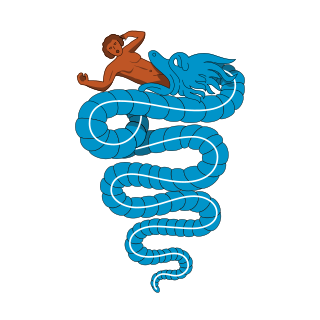
The Lord of Milan was a medieval noble title for the dynastic head of state of the city of Milan and surrounding countryside in northern Italy. From 1277 to 1395, the Visconti family held the title, after which they were elevated to Duke of Milan.
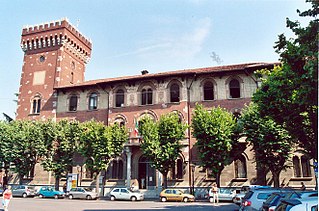
Rho is a town and comune (municipality) in the Metropolitan City of Milan in the Italian region of Lombardy, located about 14 kilometres northwest of Milan. The language spoken in Rho is Italian.
Martino della Torre was an Italian condottiero and statesman.

Giovanni Visconti (1290–1354) was an Italian Roman Catholic cardinal, who was co-ruler in Milan and lord of other Italian cities. He also was a military leader who fought against Florence, and used force to capture and hold other cities.

Ottone Visconti was Archbishop of Milan and Lord of Milan, the first of the Visconti line. Under his rule, the commune of Milan became a strong Ghibelline city and one of the Holy Roman Empire's seats in Italy.
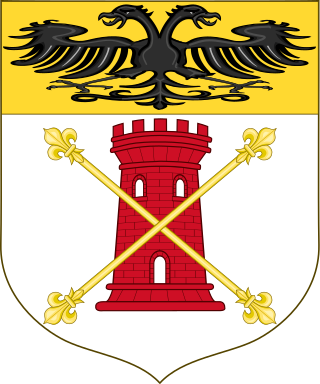
The House of Della Torre were an Italian noble family who rose to prominence in Lombardy during the 12th–14th centuries, until they held the lordship of Milan before being ousted by the Visconti.

Lodovico della Torre was Patriarch of Aquileia from 1359 until 1365.
Napoleone della Torre, also known as Napo della Torre or Napo Torriani, was an Italian nobleman, who was effective Lord of Milan in the late 13th century. He was a member of the della Torre family, the father of Corrado della Torre and the brother of Raimondo della Torre.
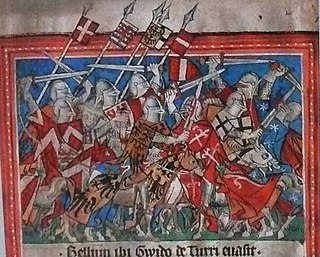
Guido della Torre was a Lord of Milan between 1302 and 1312.
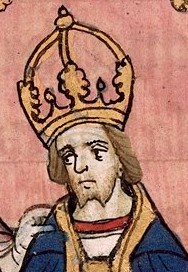
Henry VII, also known as Henry of Luxembourg, was Count of Luxembourg, King of Germany from 1308 and Holy Roman Emperor from 1312. He was the first emperor of the House of Luxembourg. During his brief career he reinvigorated the imperial cause in Italy, which was racked with the partisan struggles between the divided Guelph and Ghibelline factions, and inspired the praise of Dino Compagni and Dante Alighieri. He was the first emperor since the death of Frederick II in 1250, ending the Great Interregnum of the Holy Roman Empire; however, his premature death threatened to undo his life's work. His son, John of Bohemia, failed to be elected as his successor, and there was briefly another anti-king, Frederick the Fair, contesting the rule of Louis IV.

Matteo I Visconti (1250–1322) was the second of the Milanese Visconti family to govern Milan. Matteo was born to Teobaldo Visconti and Anastasia Pirovano.

Raimondo della Torre was an Italian clergyman, who was patriarch of Aquileia from 1273 until his death.
Corrado della Torre, also called Mosca was an Italian medieval politician and condottiero, a member of the Torriani family.

Pagano della Torre was Patriarch of Aquileia from 1319 until 1332. Another with the same name, Pagano I della Torre, was a Guelph military leader and lord of the Valchiavenna during the first half of the 13th century. Among his grandchildren were Martino, Napoleone, Guido, and Filippo della Torre, all involved in regional conflicts of Lombardy.
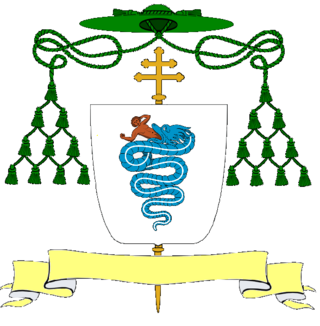
Roberto Visconti was an Italian Roman Catholic archbishop.

An uprising of the Guelph faction in Milan led by Guido della Torre on 12 February 1311 was crushed by the troops of King Henry VII on the same day.















